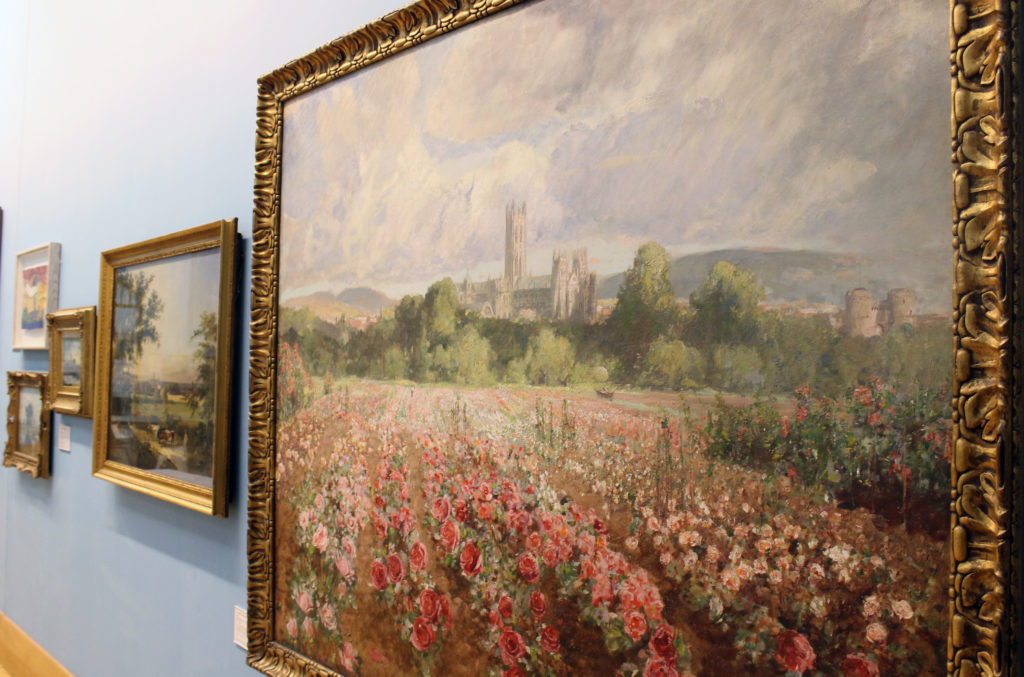
Easter fun at the museums!
Exhibitions, trails and activities; six fun things for all the family to enjoy at The Beaney and...
To mark the importance of the city to Magna Carta, The Beaney House of Art and Knowledge, Canterbury’s cultural hub, is organising a special exhibition Canterbury in the Age of Magna Carta. This free exhibition will be on display between 5th June and 6th September 2015. The exhibition will focus upon the stories of people who lived in the city during 1215.
The star exhibits in the show are two life sized plaster statues which portray two key figures in the history of Magna Carta; the Archbishop of Canterbury, Stephen Langton, and Baron Robert De Fitzwalter. For fifteen years the statues sat in storage awaiting conservation. This year, to mark the 800th anniversary of the sealing of Magna Carta, Canterbury Museums and Galleries undertook a significant conservation project to enable their display. These statues represent the foundations of democracy and connect us to the sealing of one of the most important documents ever written and to the individuals who were responsible for it.
Over 800 years ago England’s monarch, King John (1199 – 1216), was very unpopular with his barons and the church. He imposed heavy taxation, had disputes with the church and lost at war with France. Something had to be done to limit the power of authoritarian rule, so that no one was above the law, not even the King. The Archbishop of Canterbury, Stephen Langton (1150 – 1228), together with twenty five barons, including Robert De Fitzwalter and other bishops engineered the sealing of the Magna Carta by the King.
In 1215 thirteen copies of the Magna Carta were made and sent out across the country to great cathedrals. One of the copies was originally held at Canterbury Cathedral. Today only four survive; two in the British Library (including the ‘Canterbury’ Magna Carta’, one at Salisbury Cathedral and one at Lincoln Cathedral.
The two sculptures featured in The Beaney exhibition are from a collection of fifteen owned by Canterbury Museums and Galleries The Canterbury sculptures are electrotypes of fifteen of the eighteen statues of the barons which were created for the House of Lords chamber in the new Palace of Westminster during the 1850s. Both sets of statues were manufactured by Elkington and Co of Birmingham. In the 1850s public access to the Lords Chamber was limited, and the statues were, and still are, situated in niches very high on the walls. In response to the huge public demand to view the statues, the artists life-sized scale-models were exhibited in the world famous showroom of Elkington & Co at Newall Street in Birmingham from 1860 where they were seen by tens of thousands of people. The statues were donated to Canterbury Museums in 1906. They have a national artistic significance, being created by nine sculptors chosen through a competition.
Lord Julian FitzWalter, a direct descendant to Baron Robert De FitzWalter, generously contributed to the conservation fund to enable the baron’s display. Post conservation The Beaney welcomed him to visit his namesakes sculpture in the exhibition room.
Few can claim such prolific linage, tracing their family history back from the time of the signing of the Magna Carta in 1215. This continued throughout the Tudor period where the Fitzwalters were leading courtiers and politicians, later becoming the Earls of Sussex.
Sir Brook Bridges, the 3rd baronet and great grandson of the builder of Goodnestone Park, the FitzWalters current family seat, married Fanny Fowler who was a co-heiress of the ancient Norman barony of FitzWalter established in 1295 by the grandson of Robert FitzWalter. Towards the end of the 19th century the last of the Bridges family married a member of the Plumptre family and their son was eventually able to successfully claim the ancient FitzWalter barony in 1924, after it had been in abeyance for 168 years.
He was succeeded in 1952 by his nephew who became the 21st Lord FitzWalter. After his death in October 2014 his eldest son Julian succeeded to the title.
The sculptures of Stephen Langton and Robert De Fitzwalter will go on permanent display at The Beaney after the Canterbury in the Age of Magna Carta exhibition has concluded.
For more information on Canterbury in the Age of Magna Carta and other commemorative exhibitions and events please visit www.thebeaney.co.uk
Canterbury in the Age of Magna Carta will be on display until 6th September 2015.
